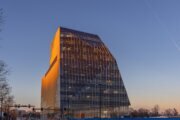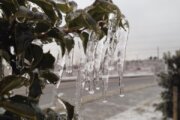WASHINGTON — Each year scientists and natural resources mangers study the size and duration of so called “dead zones” in the Chesapeake Bay in an effort to figure out the impact on life in the Bay.
But the dead zones in the Chesapeake are growing. Scientists who predicted the increase aren’t surprised. Tom Parmham, a scientist with the Maryland Depa rtment of a Natural Resources, says, “It’s nothing to be alarmed about. It’s slightly higher than average.”
Dead zones are areas deprived of oxygen and that means crabs, fish, oysters and other Bay life can’t survive there.
“Dead zones are caused by excessive nutrients from farms, sewage plants, fertilizer and sewage plants,” says Parmham.
Dead zones are influenced by pollution and weather conditions. In fact, Parmham says the slightly higher increase in dead zones came as no surprise because of heavy rain and the runoff associated with it. A June study shows that Maryland’s portion of the Bay has the 8th largest dead zone in 30 years.
“The rain comes down and runs off the land and eventually makes its way to the bay. What comes off the land are the fertilizers,” says Parmham
That provides the fuel for algae to grow and that algae blooms cause the dead zones.
“What this means for the bay is that we are still working towards restoring the bay and we’re not there yet.”
Follow @WTOP on Twitter and WTOP on Facebook.







